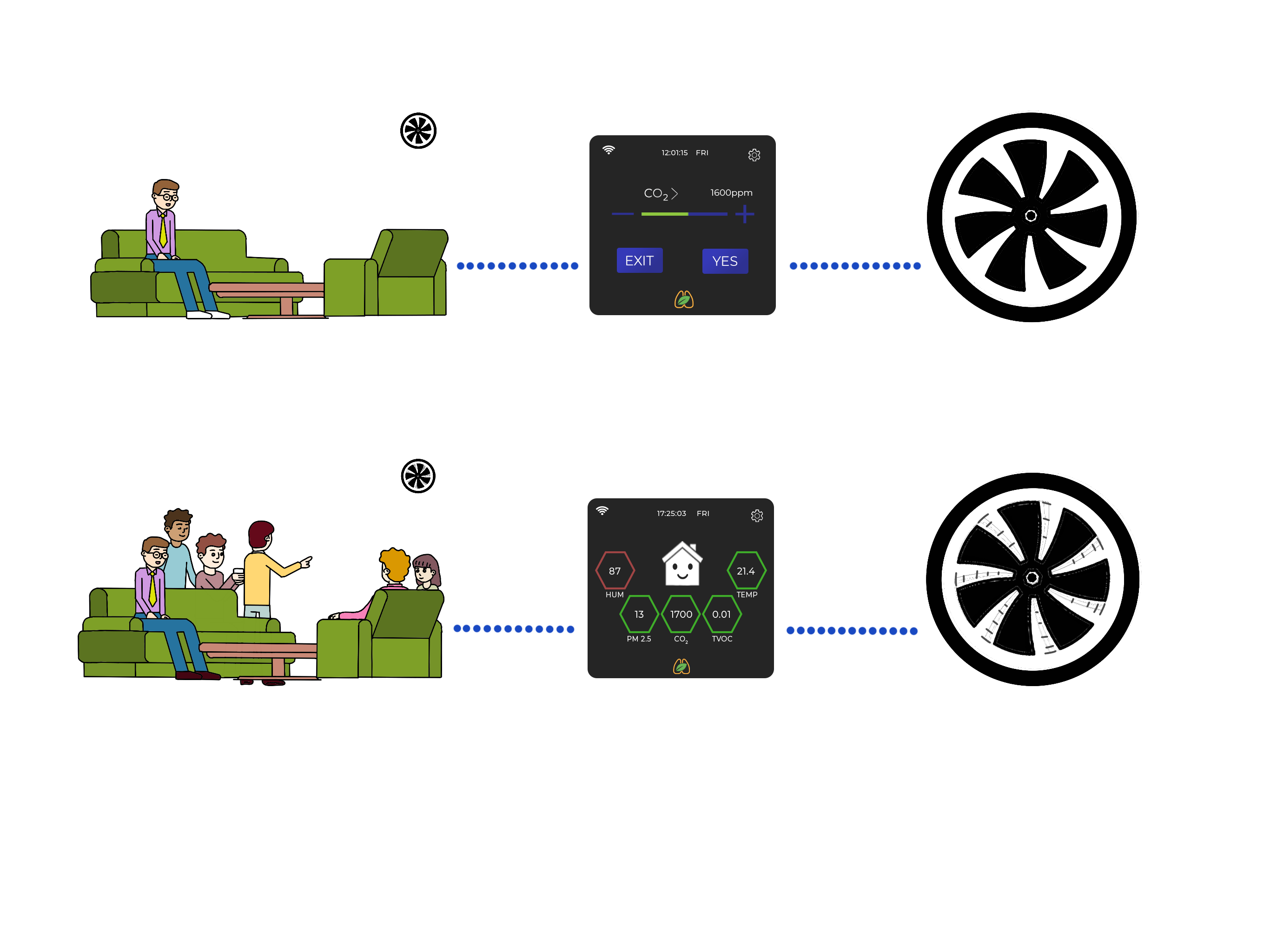Increasing levels of carbon dioxide (CO2) have taken the world by storm in the form of Global Warming. It is also a primary contributor to the grotesque phenomenon of climate change. However, it is also vital to living. CO2 is a double-edged sword. But did you know it determines the quality of the air you are breathing in your rooms? Read more to find out the role of CO2 in indoor air and how to manage it effectively!
What is Indoor Air Quality (IAQ)?
Indoor Air Quality (IAQ) is one of the qualitative and quantitative indicators descriptive of the environmental quality inside a building. It gives the measure of the air quality inside and around the boundaries of a concrete structure. IAQ affects the comfort, health, and productivity of the occupants of the building.
Numerous IAQ parameters control the air quality in a building. These include particulates, microbes, dander, and various gases. One of these parameters is carbon dioxide.
What is the importance of CO2 in indoor air?
Carbon dioxide (CO2) occurs naturally in the atmosphere. It is an odorless and colorless gas at room temperature that is vaguely acidic in taste. CO2 is non-combustible. It can also exist in liquid and solid (dry ice) forms, depending upon the temperature and pressure conditions. CO2 occurs naturally in the atmosphere, commonly measured in parts per million (ppm).
CO2 is a crucial determinant of indoor air quality. It is a by-product of combustion and several metabolic processes in humans. Hence, the indoor levels of CO2 are generally more than what it is outside. The average adults exhale approximately 35,000 to 50,000 ppm of CO2 that is 100 times higher than outdoor air. The CO2 levels increase with an increase in the number of occupants in an indoor set-up. Therefore, it is safe to presume that the concentration of CO2 is in sync with human presence and ventilation. CO2 can accumulate in the lack of proper ventilation to dilute and eliminate the indoor concentration of the gas.

More the number of occupants in an indoor environment, the more the concentration of CO2 in indoor air
Can excess of CO2 in indoor air affect us?
Most certainly. Excess of everything is detrimental. Copious concentrations of CO2 and other pollutants may result in Sick Building Syndrome. These include acute symptoms that cause discomfort to the occupants of a building. The symptoms may restrict themselves to a particular area or maybe persistent in the entire building.
High concentrations of CO2 can induce headache, nausea, dizziness, and a tingling (needle-like) feeling. Higher levels may lead to difficulty in breathing (dyspnea), sweating, exhaustion, vomiting, and an increase in heart rate (tachycardia). Loss of consciousness occurs at jarringly high levels of CO2.
What levels of CO2 in indoor air is alarming?
Varying concentrations of CO2 in indoor air relate to different signs and symptoms.250-350 ppm: Normal outdoor air level
- 350-1,000 ppm: Typical level in occupied spaces with adequate air exchange.
- 1,000-2,000 ppm: Complaints of drowsiness and unbreathable air
- 2,000-5,000 ppm: Headaches, drowsiness, and stagnant, stale, stuffy air; difficulty in concentration, loss of attention, increased heart rate, and slight nausea may also be present.
- >5,000 ppm: Indicates unusual air conditions with probable high levels of other gases. Toxicity or oxygen deprivation (asphyxia) could occur. It is the permissible exposure limit for daily workplace exposures.
- >40,000 ppm: This level is immediately harmful due to oxygen deprivation.
Therefore, one should be wary of the concentration of CO2 in the air that they are breathing.
How can we manage the alarming levels of CO2?
The first step to the effective management of CO2 in indoor air is its effective monitoring. Install a precise air quality monitor with relays in your indoor environment, and connect it with your exhaust/ventilation system. Set a threshold value of CO2 according to your comfort. As soon as the CO2 concentration goes beyond the limit, the ventilation system will get activated. It would allow the dilution of CO2 in indoor air. The ventilation system will automatically switch off when the concentration retreats to less than the threshold value.

One can set the threshold of CO2 in Indoor Air as per their comfort, and connect the device with the exhaust system to manage CO2 levels effectively.
If you want such device, click here.